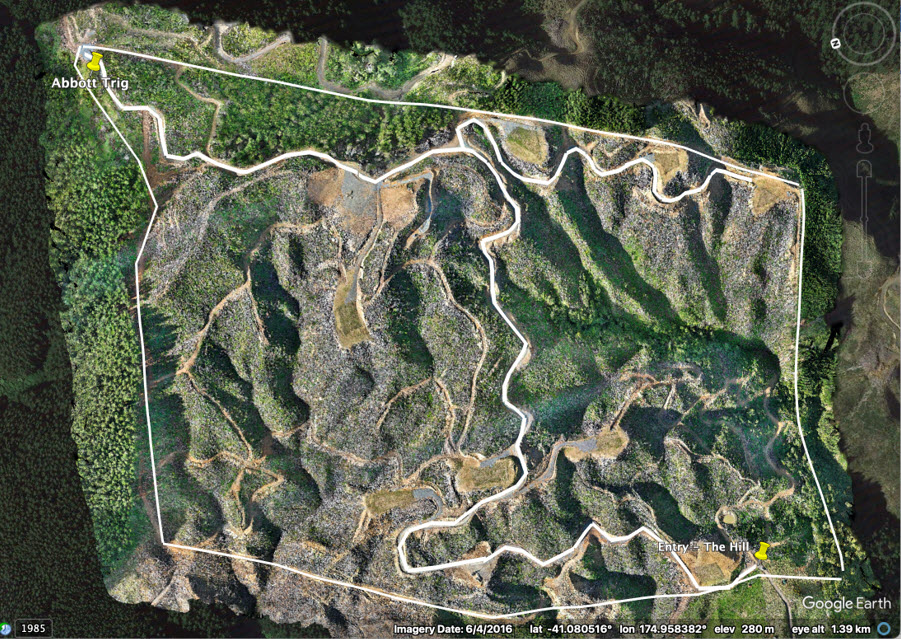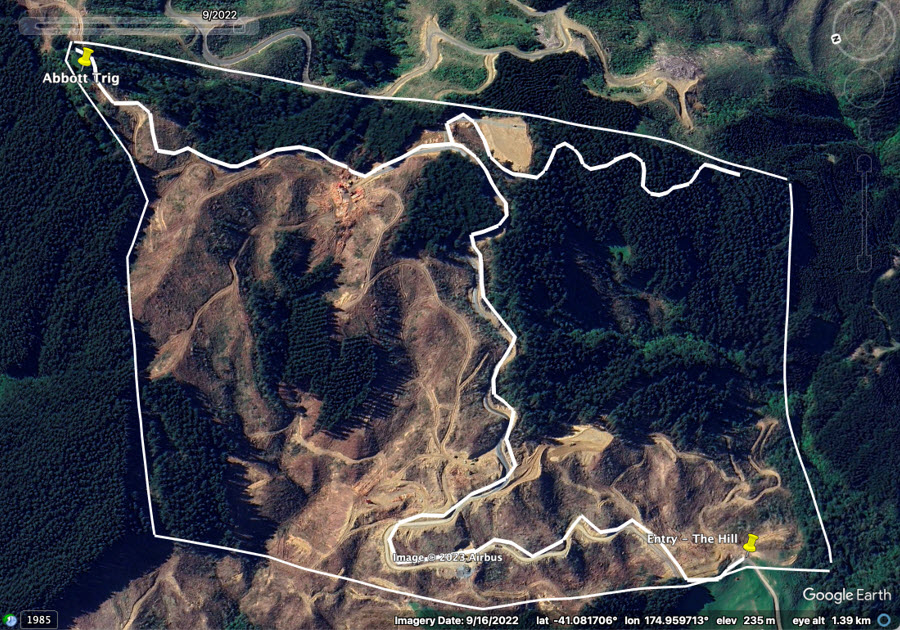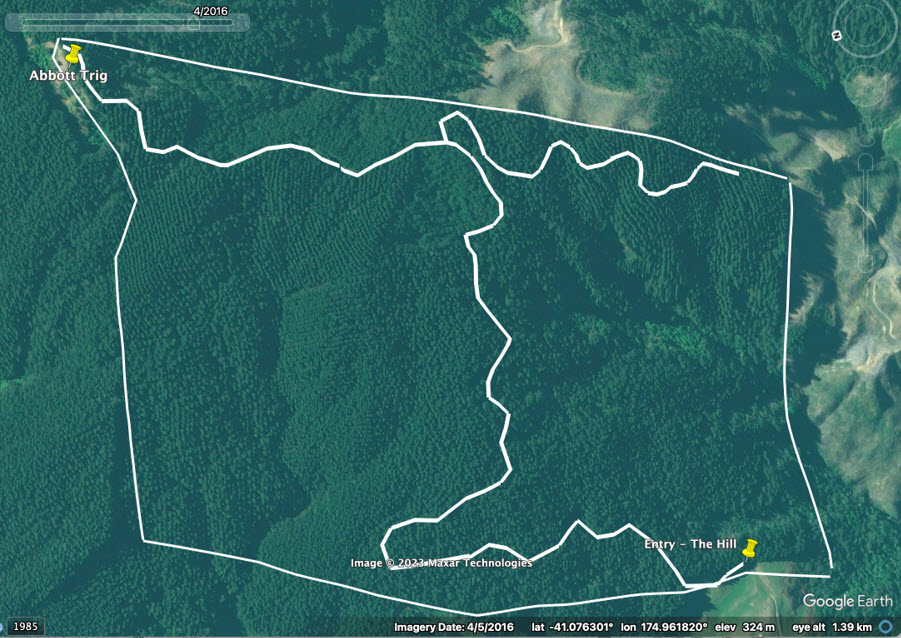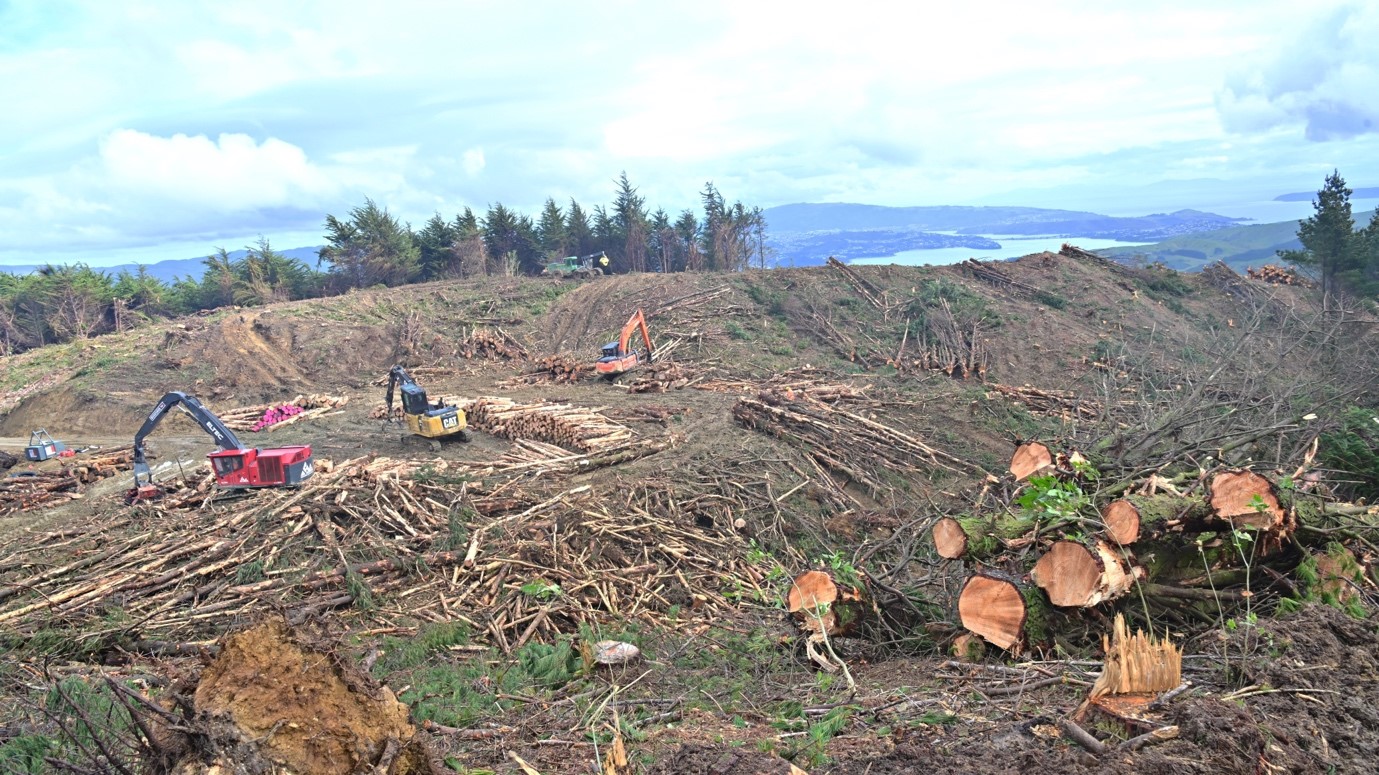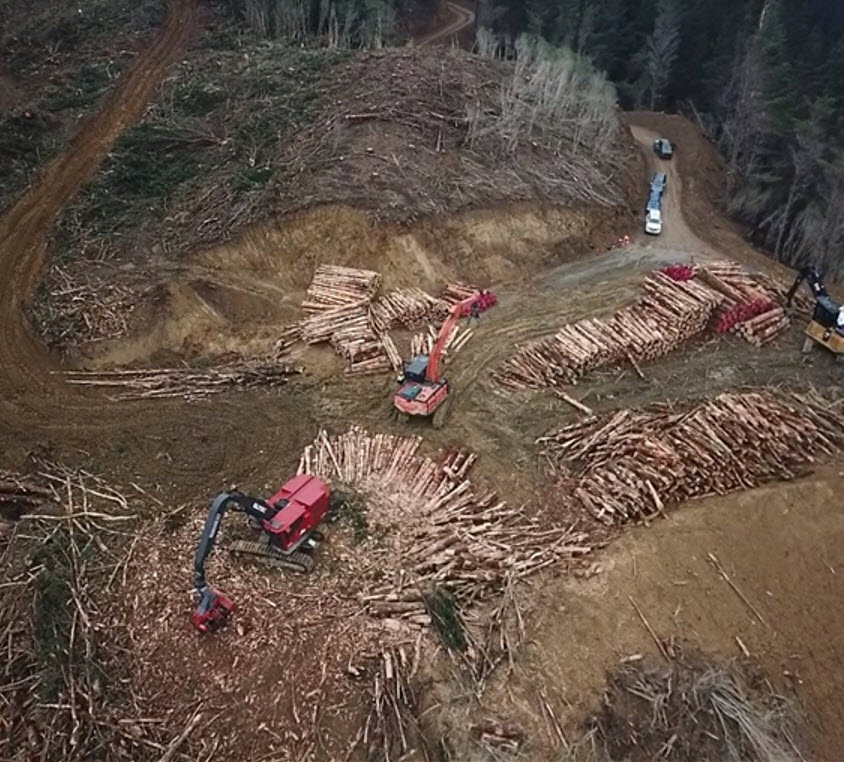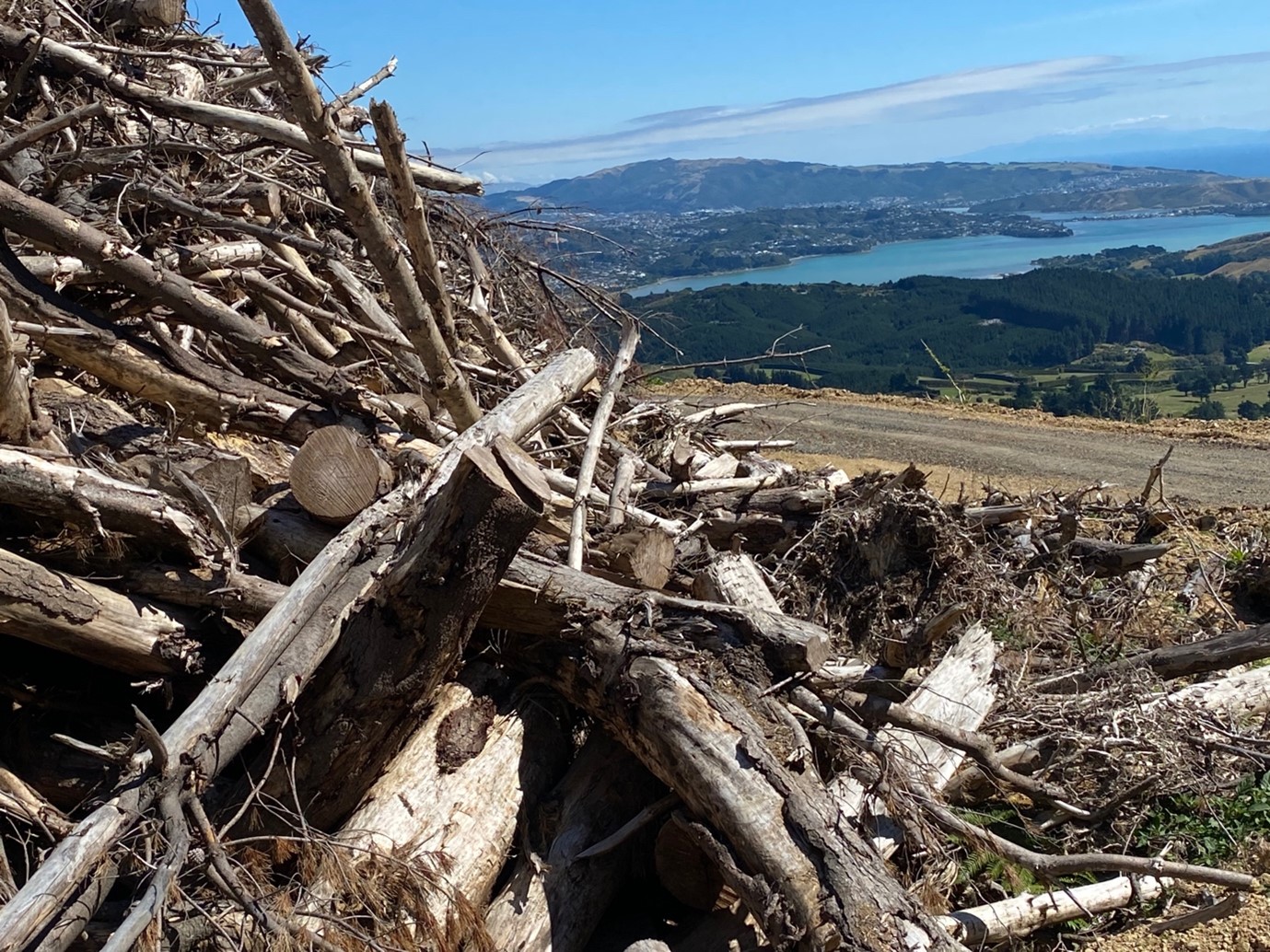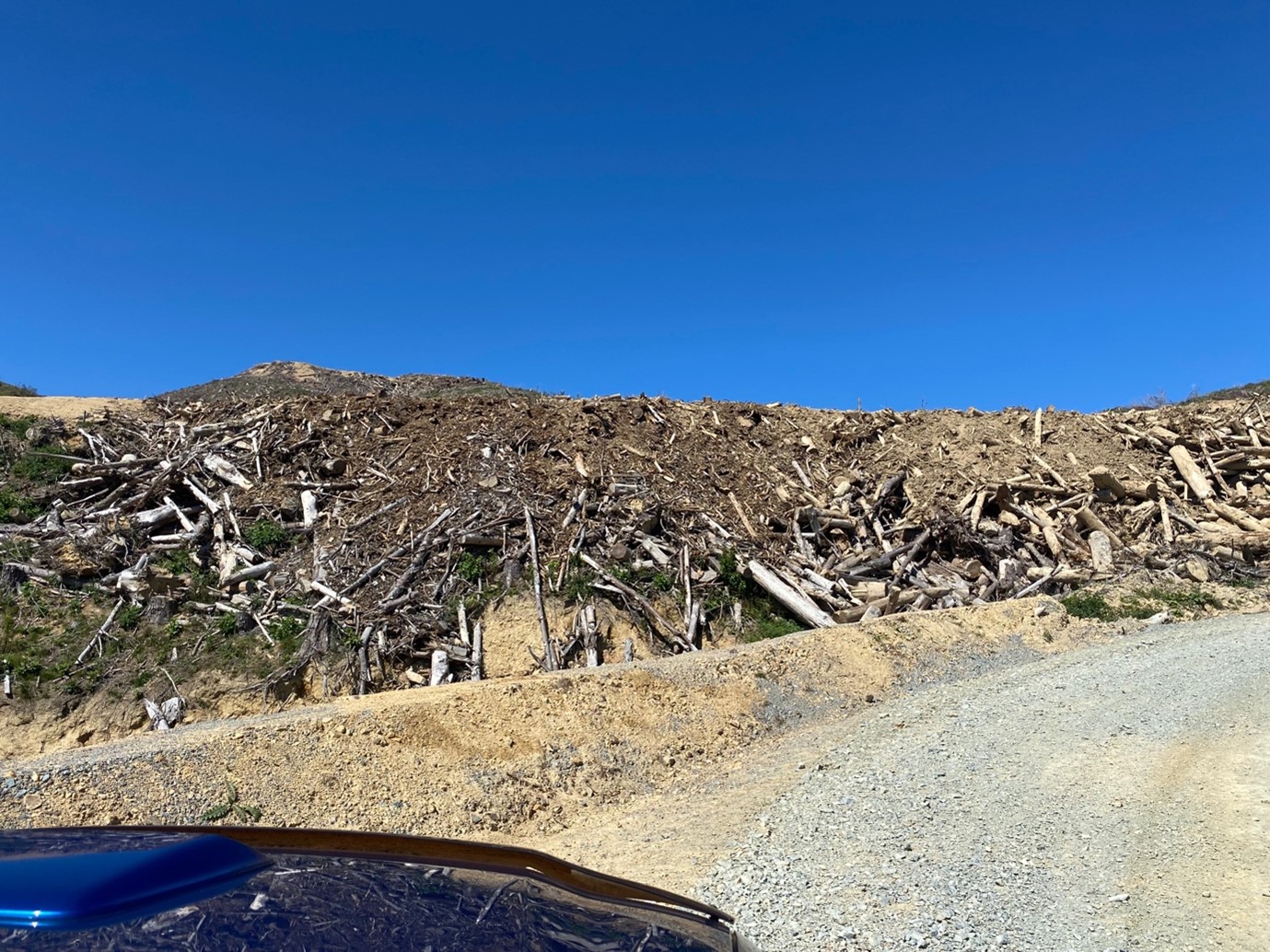The Conservation Estate
Conservation Values
This 60ha of hillside was a mature pine forest when we bought the property in 2019. We clear-felled it and harvested the logs. From then, surrounded by little more than a mountain of slash we’ve set about re-establishing a native forest with a view to it being here in-perpetuity . To have a chance of that we’ve decided to keep mammalian predators and herbivores out primarily by surrounding the block with a far-from-perfect predator-proof fence, supported by a trap and bait station network.
The biodiversity of the forest floor is as important a component of the ecology as are the trees themselves and New Zealand bush has become infested with pigs, goats, deer and increasingly wallaby. So the deer fence has been installed to keep them out. And then around the foot of that we have installed a skirt of wire netting, pegged to the ground. Our aim there is to keep rabbits and hares at bay – further threats to burgeoning flora. That leaves mustelids and rodents which threaten the fauna who would like to call this place home, rather than the flora itself. Our traps and bait stations target them.
Recreational Values
The hillside offers spectacular views of Porirua and Pauatahanui harbours as well as across the Strait to Tory Channel, Queen Charlotte Sound south to Kaikoura and Mt Tapuae-O-uenuku. In order to preserve those vistas we have planted “low-rise” flora along the roadside and around the flat platforms that were skid sites built for the pine harvest. We’re hoping this allows visitors to enjoy overnight glamping under the stars while they experience the surrounds of the indigenous ecosystem; allows hikers and cyclists that want to traverse our tracks to experience both views and native bush; and on special occasions we can hold concerts up at the summit under the stars. We don’t want recreational and ecological restoration to be mutually exclusive – the objective is for co-existence.
Restoration of the Fauna
Starting with a site covered with pine forest slash, we’ve had to choose which pathway we will follow re-establish a biodiverse indigenous ecosystem. As a start we’ve decided to just wait and see which native species will emerge via natural regeneration after the harvest. The invasion of weeds including wilding pine is an early challenge and our plan for dealing with this has been put together by Kawakawa Environmental, a Kapiti Coast-based consultancy. They have installed a number of monitoring plots across the property and will observe the progress of both the endemic and the invasive species, and recommend programmes to eliminate the invaders.
Rather than commence with the common practice of undertaking a helicopter-based spray of the block with say Meturon targeting the wilding pines, our concern has been to boost as much as possible the chances of the indigenous species regenerating. Inevitably this means at about four years after harvest we will be faced with a ground-based poisoning or cutting out of the wildings. While labour-intensive and more directly costly, our feeling is that if it saves us significant planting of natives, then it will have been worth it. Of course we won’t know till we get there!
Stages of the Transformation to Native:
September 2023
